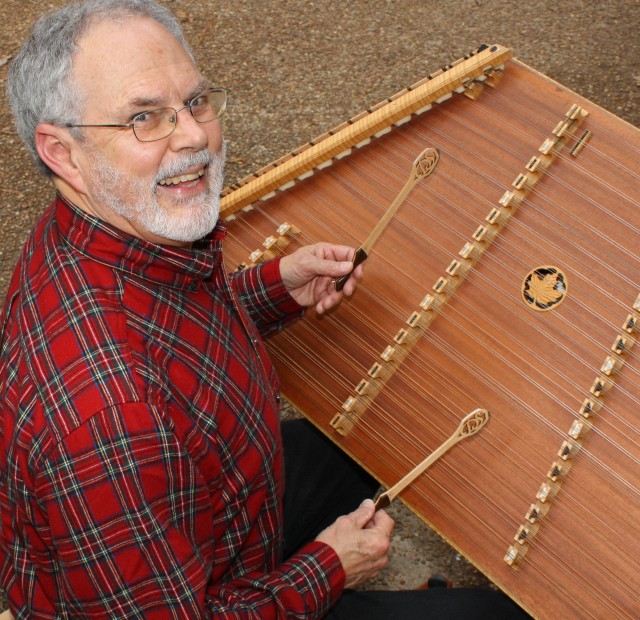In 2011, when I was considering tunes for the Civil War album Tenting on the Old Camp Ground, I thought of the spiritual “Wade in the Water” (and ended up doing it in a lively duet form with Bill Gurley, in an arrangement Bill originated). I remembered that I’d first heard the marvelous melody on a record by the Tijuana Brass in the 1960s --- so I went looking for the track and ended up re-collecting in digital form all of their albums! I began to realize that these, and especially the two records I owned at that time, What Now My Love and The Brass Are Coming, had had a profound influence on my musical sense and styling ever since. I play different instruments and genres than Herbie and his group of first-rate session men, but the approach I use to production, arranging, and playing is definitely similar!
To convince myself that I wasn’t just imagining this influence, and to perhaps share the ideas with others, I started a brainstorming list --- and it quickly became a large set of both general concepts and specific applications.
Here it is! I hope you as a musician or other creative artist can find inspiration and ideas for your own work. Let me know your own thoughts!
- Compose new pieces about things that matter to you.
- Don’t assume that your audience is limited to a certain demographic, but let your sincerity and spontaneity speak, and perhaps you’ll reach the hearts of many sectors of society!
- When doing popular pieces, don’t do them like other people do.
- Don’t merely play a tune --- let the tune be a basis for your own “singing” on your instrument.
- Change keys a lot, and change them in all sorts of ways.
- Change tempo in intriguing ways.
- Change lead instruments a lot, even within a verse, but use your best solo instruments the most.
- Slow down or speed up a familiar piece, and change the rhythmic approach from what people are used to.
- Only play music that really speaks to you yourself as you do it.
- Let your version of a melody be crafted according to what your arrangement asks of it, changing notes and timing as needed.
- In an ensemble, find a way for the rhythmic groove to be developed irresistibly while preserving the personalities of each player in the section --- each working off the others as real people while contributing his element to the groove.
- Incorporate many interesting answering counter-parts in the arrangement.
- Use creative, engaging voicing in the lead instrument --- many personal details.
- Make albums and concert sets that have an intriguing and colorful theme.
- Let a sense of humor take over at times, even in a daring way.
- Really, really enjoy yourself --- make it one of the goals of the music; always be searching for passion and joy.
- Use instruments that people don’t expect to be used for your kind of music.
- When doing folk music, keep respect for the source but be yourself with it.
- Bring folk music techniques and ideas into other genres.
- When working with other musicians, allow them to express their own musical personalities in the arranging and playing, rather than just use them for their instruments’ technique and tone.
- Incorporate people in your albums who aren’t normal professionals --- like having studio maintenance people sing, etc.!
- Use big and little contrasts --- in tempo, key, mood, volume, genre, size of group, instrumentation --- within a piece and within a series of pieces.
- Look for a sense of drama and experience.
- Take a quiet ballad and make it rhythmic and exciting; take a fast, happy tune and make it quiet and contemplative.
- Don’t just play your instrument --- play music using your instrument.
- Make “comments” with the lead instrument, and accent notes, other than the melody.
- Bring a piece to a total halt, then start it up again.
- Combine insistent rhythm grooves with emotional chord choices and progressions, for a compelling effect on the listener.
- Hum!





Comments
Get post, Tim. Though I don't consider myself a trained musician, I enjoyed your thoughts about how to express oneself with joy and liberty via art. Your words are inspiring and contagious. I will print them and bring them to my 10 year-old artist daughter, who isn't yet in the blog-reading stage. But I think they will inspire her.
BTW, among the albums my mom used to play when I was a kid were a few by Herb Alpert and the Tijuana Brass. I loved them! When given the opportunity to chose an instrument to learn in the 5th grade, without thinking I picked the trumpet. It's no wonder why!
Dennis --- Thank you for the insightful response! It's a big dream of mine to communicate ideas in such a way that they transcend the specific application and reapply in other areas. Best wishes for your daughter's art!